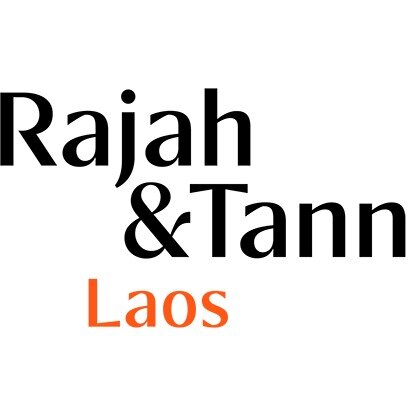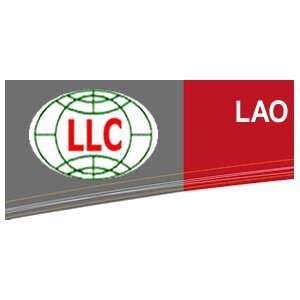Best Restructuring & Insolvency Lawyers in Laos
Share your needs with us, get contacted by law firms.
Free. Takes 2 min.
Or refine your search by selecting a city:
List of the best lawyers in Laos
About Restructuring & Insolvency Law in Laos
Restructuring and insolvency law in Laos covers the legal processes that guide companies and individuals when they face financial distress or are unable to meet their financial obligations. This field of law provides a framework for debtors and creditors to resolve financial difficulties, often aiming to protect the interests of multiple parties and maintain economic stability. The laws in Laos are shaped by the country’s unique economic environment and legal system and are governed by key legislation such as the Law on Bankruptcy and related regulations. These laws set out procedures for formal insolvency proceedings, restructuring plans, and the recovery or liquidation of assets.
Why You May Need a Lawyer
Legal representation in restructuring and insolvency matters can be crucial for both businesses and individuals. Here are some common scenarios where engaging a lawyer is advised:
- Your business is unable to pay debts when they fall due and is at risk of insolvency.
- You are a creditor seeking to recover outstanding debts from a defaulting customer or business partner.
- You are considering voluntary restructuring to avoid insolvency and resume profitable operations.
- You have received notices of insolvency proceedings or are facing legal action initiated by creditors.
- You need guidance on negotiating with multiple creditors or entering into a restructuring agreement.
- You want to protect your rights or assets during the insolvency process or dispute the actions of other parties involved.
- You require representation in court proceedings related to bankruptcy or insolvency.
Local Laws Overview
The key legal framework for restructuring and insolvency in Laos is provided by the Law on Bankruptcy, alongside provisions in the Civil Code and related commercial laws. Noteworthy aspects include:
- Eligibility to Initiate Bankruptcy: Both individuals and entities who cannot pay debts are eligible to file for bankruptcy. Creditors may also initiate insolvency proceedings against a debtor.
- Out-of-court Restructuring: Debtors can negotiate with creditors out of court to restructure debts, often with the aim of keeping the business operational.
- Court-supervised Proceedings: If necessary, formal bankruptcy proceedings can be initiated in court, which may result in the liquidation of assets to satisfy debts, or an approved reorganization plan.
- Order of Payment: Local law sets out an order of priority for creditors during liquidation, starting with secured creditors, followed by employees, tax authorities, and unsecured creditors.
- Prevention of Fraudulent Transfers: The law restricts debtors from transferring assets to avoid debt repayment after insolvency proceedings begin.
- Rehabilitation Processes: Legal mechanisms exist for debtors to seek formal rehabilitation and avoid full bankruptcy where possible.
- Role of Administrators: The court may appoint administrators or liquidators to oversee the process, manage the debtor's assets, and ensure compliance with local legal requirements.
Frequently Asked Questions
What is the difference between restructuring and insolvency?
Restructuring refers to processes that aim to reorganize a company’s finances, operations, or structure to avoid insolvency. Insolvency, on the other hand, occurs when a person or business cannot pay debts as they become due and may lead to formal bankruptcy proceedings.
Who can file for bankruptcy in Laos?
Both individuals and legal entities, such as companies, who are unable to meet their financial obligations, can file for bankruptcy under Laotian law. Creditors may also request that the court commence insolvency proceedings against a debtor.
Can debts be settled without going to court?
Yes, it is possible for debtors and creditors to negotiate settlements or restructuring agreements outside of court. However, formal restructuring may still require court approval in some situations, especially if it affects multiple creditors.
What are the roles of a bankruptcy administrator or liquidator?
An administrator or liquidator is appointed by the court to oversee the insolvency process. They are responsible for managing the debtor’s assets, conducting investigations, and ensuring fair and legal distribution of assets to creditors.
How long does the bankruptcy process take in Laos?
The time frame varies depending on the complexity of the case, the number of creditors, and the court’s workload. Simple cases may be resolved in several months, while more complex proceedings can last considerably longer.
What happens to employees if a company goes bankrupt?
Employees are considered preferential creditors under Laotian law and receive priority in the payment of certain claims, such as unpaid wages, during the distribution of assets in bankruptcy.
Can a company continue trading during restructuring or insolvency proceedings?
In some cases, businesses may continue operating during restructuring with court approval and under supervision. In formal bankruptcy, trading may be suspended, and asset liquidation may follow.
Are directors personally liable for company debts?
Directors are generally not personally liable for company debts unless they have engaged in wrongful, fraudulent, or criminal conduct that contributed to insolvency or breached their fiduciary duties.
How does the court process begin?
A petition is filed with the court by the debtor or a creditor. The court then reviews the financial situation and may appoint an administrator or open insolvency proceedings if criteria are met.
What can creditors do if they believe assets are being hidden or mismanaged?
Creditors may inform the court or the appointed administrator if they suspect improper conduct. The court can investigate and take action to recover assets or reverse fraudulent transfers.
Additional Resources
If you are involved in a restructuring or insolvency matter in Laos, the following resources and organizations may provide useful guidance:
- Ministry of Justice - Bankruptcy and Insolvency Office
- Chamber of Commerce and Industry - Legal and Arbitration Services
- Local bar associations for specialist referrals
- Financial regulatory authorities for reporting or oversight issues
- Legal aid clinics for individuals or small businesses unable to afford private legal services
Next Steps
If you are facing financial distress or involved in a restructuring or insolvency issue in Laos, consider the following actions:
- Gather all documentation relating to debts, assets, and recent financial transactions.
- Consult with a local lawyer or legal adviser experienced in restructuring and insolvency cases.
- Assess whether out-of-court negotiation or formal proceedings are more suitable for your situation.
- If you are a creditor, closely monitor asset transfers and communicate promptly with administrators or legal representatives.
- Stay informed of your rights and obligations under Laos law and seek ongoing professional advice as your case progresses.
Taking early and informed action, with the assistance of qualified legal counsel, can help to protect your interests and achieve the best possible outcome during financial restructuring or insolvency.
Lawzana helps you find the best lawyers and law firms in Laos through a curated and pre-screened list of qualified legal professionals. Our platform offers rankings and detailed profiles of attorneys and law firms, allowing you to compare based on practice areas, including Restructuring & Insolvency, experience, and client feedback.
Each profile includes a description of the firm's areas of practice, client reviews, team members and partners, year of establishment, spoken languages, office locations, contact information, social media presence, and any published articles or resources. Most firms on our platform speak English and are experienced in both local and international legal matters.
Get a quote from top-rated law firms in Laos — quickly, securely, and without unnecessary hassle.
Disclaimer:
The information provided on this page is for general informational purposes only and does not constitute legal advice. While we strive to ensure the accuracy and relevance of the content, legal information may change over time, and interpretations of the law can vary. You should always consult with a qualified legal professional for advice specific to your situation.
We disclaim all liability for actions taken or not taken based on the content of this page. If you believe any information is incorrect or outdated, please contact us, and we will review and update it where appropriate.
Browse restructuring & insolvency law firms by city in Laos
Refine your search by selecting a city.












